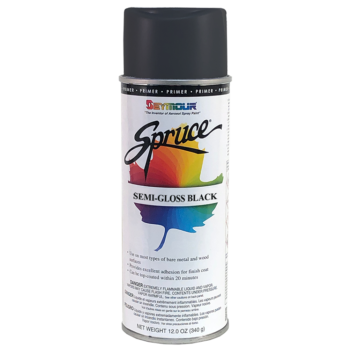Discover the Power of Automotive Primer Paints
One of the most important striking features of a car is its color. More than just the paint, the car's color is a major reflection of your personality. Also, Automotive primer spray paint helps you in protecting your car and, at the same time, beautifies it.
Recent facts show that white is a top hit and comes with various specifications. Also, the look of a car matters a lot, and it is important to know everything about the paints used by your favorite brands.
What Exactly Is Car Paint?
As you have watched in some automobile manufacturing videos, any vehicle production involves four main stages: stamping, painting, and final assembly. After the first two steps, all the parts will be attached to the body, and the core carrier known as the Body-In-White is created.
Going in deeper with the car paints, they consist of four types of raw materials, including:
1: Pigments or filers: These add color to the paint.
2: Thinner: Brings out consistency in the paint levels.
3: Binders: It binds together the pigment and the thinner.
4: Solving or dispersing agents.
5: Additives.
The Earlier Approach
The early car paints were time-consuming and not very environmentally friendly. Paint would be applied and left dry for weeks at room temperature.
Because it was single component paint dried by solvent evaporation, the paints contain lead, chromium, and other heavy metals, which were banned by the government owing to environmental laws.
But remember, it can evaporate into the air polluting the air. A two-component paint is applied by robotic arms, which happens under any temperature range and in no time. As for the basecoat, water-based acrylic polyurethane enamels are being used worldwide.
The General Stages Involved
The e-coat primer and clear coat applications are usually followed by the banking, drying for dispersing agent removal or power melting, and cross-linking paints to form the coating layer. This process generally involves a three-stage process.
Prepare Your Car Before Painting It
Before painting, the BIW must be cleaned to remove any oils or dirt, which is deposited with a pretreatment layer and rinsed off any pretreatment chemicals.
Apart from this, any dents on your car must be smoothed out using suction cups or dent-removing tools. Fillers mainly follow Dent removal, and finally, fine sandpaper will be used to ease the filled area.
Applying The Primer
Just like normal paints, the primer is one of the finest coats used for coat painting. It is again a crucial step wherein the entire car surface is applied with the primer except for the windows or the chrome.
However, primer prevents the body from rust, UV-light, and heat differences and helps you level out the car surface. However, it may take more than one coat to ensure that all the required surfaces are prepared for the final painting.
Base Coat
This base coat takes care of the fancy colors and visual effects of your car, which is nothing but the car's paint. They are further classified into solid, metallic, and pearlescent pigments.
Clear Coat
This is the final coating layer of the car paint, which gives a glossy and transparent coating. So, it is expected to be chemically stable to withstand UV light. However, the original equipment goes with the one-part formulations, which can be heated to around 140 Celsius to effect a cure.
Whereas the Automotive primer paint of the car is coated with the two-part formulations because of a low range of temperature acceptance of around 90 degrees Celsius.





Comments
Post a Comment